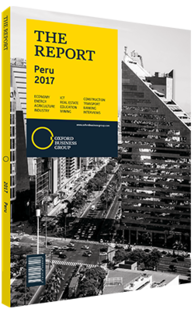Peter Shaw, Head of Latin America, Fitch Ratings: Interview

Interview: Peter Shaw
What steps can Peru take to reduce its exposure to lower commodity prices?
PETER SHAW: Policymakers have a well-developed track record and consistent, credible and flexible policy frameworks to manage commodity price volatility without risking macroeconomic and financial stability. Moreover, the government has built international reserves to absorb external financing shocks or manage the impact of depreciating pressures, due, for instance, to the presence of financial dollarisation. The space and capacity to implement counter-cyclical policies varies. The track record of inflation targeting and fiscal prudence that led to the accumulation of savings and low public indebtedness, and the accumulation of high international reserves to smooth exchange rate depreciation, have allowed policy makers to implement a fiscal stimulus, smooth the nuevo sol depreciation and make progress in reducing financial dollarisation.
Nevertheless, the challenge for Peru’s policy makers is to adjust fiscal and monetary policies in order to maintain policy credibility and preserve macroeconomic stability and fiscal sustainability and improve non-commodity sectors’ growth prospects through initiatives such as current infrastructure programmes.
Is there a need to tighten monetary policy in order to tackle currency depreciation and inflation?
SHAW: Improved exchange-rate flexibility has been a key absorption mechanism against commodity price declines and increased volatility in international financial markets. The pass-through of currency depreciation combined with supply shocks, some related to the El Niño weather phenomenon, have negatively impacted inflation dynamics in Peru. Average inflation rose from 3.3% in 2014 to 4% in 2016, which is well above the central bank’s ceiling for its inflation target.
The increase in inflation expectations over the past years illustrates the challenge for authorities to maintain the credibility of inflation-targeting regimes and support the adjustment of current account deficits to the present international conditions. In the near term, tighter monetary policy could weigh on growth prospects, but reinforcing the commitment to price and financial stability would consolidate the gains that have been made due to the policy credibility, flexibility and coherence displayed over the past two decades.
To what extent is there overexposure to foreign currency debt in the private sector?
SHAW: External debt has risen in Latin America, reflecting not only favourable global liquidity conditions but also the improvement in the creditworthiness of sovereigns. External debt in Peru rose from 35% of GDP to 42% of GDP in 2015. When measured in terms of current external receipts (CXR), the increase is more evident. Total debt increased from 130% in 2013 to 167% of CXR in 2015. External debt structure favours medium-to long-term tenors, thus minimising refinancing risks. Approximately 85% of the aggregate corporate debt of Peruvian issuers is denominated in a foreign currency and hedging is used only minimally, as derivatives are costly and not widely available. About 60% of the issuers are exporters or sell commodities such as sugar that are priced in USD. Due to the high levels of local financial dollarisation, the central bank has softened the volatility of the nuevo sol through foreign exchange intervention. Authorities have made significant progress in reducing the foreign currency (FC) portion of domestic credit facilitating nuevo sol liquidity and establishing goals to reduce the share of FC credit from 48% at the end of 2014 to 28% currently.
What impact will the dearth of new mining projects have on GDP growth in 2016 and 2017?
SHAW: Peru’s growth outlook reflects muted recovery in international copper prices and Chinese growth. Rising exports from new and expanded copper mines are expected to drive 3.3% growth in 2016 and 4.0% in 2017.
You have reached the limit of premium articles you can view for free.
Choose from the options below to purchase print or digital editions of our Reports. You can also purchase a website subscription giving you unlimited access to all of our Reports online for 12 months.
If you have already purchased this Report or have a website subscription, please login to continue.

